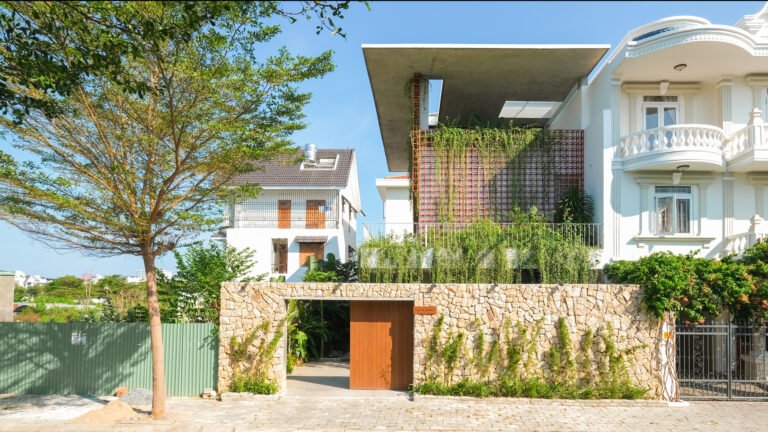roovice restores spatial harmony in japanese home using traditional architecture methods
roovice renovates hakuraku house in japan
Japanese studio Roovice has recently given a new life to Hakuraku House, a 90-year-old wooden home in Yokoham, Japan, using traditional Japanese architecture methods. Preserving the historic, faded façade and restoring the primitive wooden structure, the architects redesign the internal spatial layout to inject a sense of harmony. Adopting the traditional approach of Kakekae, Hakuraku House reveals a refreshed, spacious character bounded in the bright interior flooded with generous natural light.
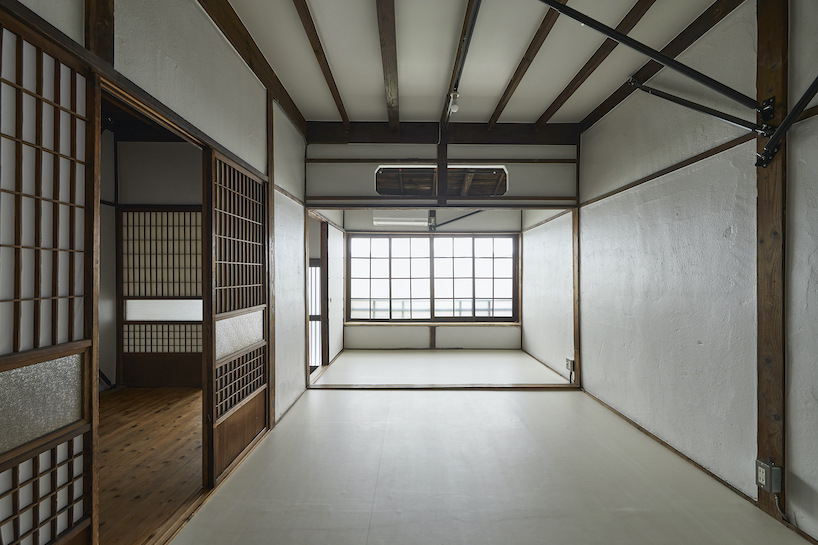
all photography by Akira Nakamura
restoring a harmonious spatial layout
The original wooden structure was built during the 1930s as a symmetrical two-apartments dwelling. Since then, it has undergone several extensions and additions, revealing an incoherent spatial layout with a tangled flow of use. Presented with the challenge of restoring a sense of harmony to the space, Roovice redesigns the layout’s extensions in a more ordered manner to enhance the circulation system on the first floor, and open up the interior space. To achieve this, the designers make use of the traditional Japanese architecture approach of Kakekae (‘substitute’, ‘replacement’) – the approach of altering existing elements to enhance the space.
With a somewhat awkward geometry, the original stairs shaped the spaces on the first and second floor, while the added new stairs – though pleasant for walking – tainted the rooms served. Resolving this with the method of Kakekae, the added stairs were shifted to replace one of the early ones, thus restoring the symmetrical circulation and granting more generous space to the kitchen. The void left in the slab from the rearrangement was transformed into a double height connecting the kitchen with the vanity unit and bathroom on the top storey, while the lower bathroom moved from the squeezed spot under the stairwell to the annexe room. The steep original staircase leads to the newly opened second floor, where Roovice removes the division walls to generate an open space with generous natural light granted by the improved windows.
The main task during renovations of old buildings in Japan, wooden houses in particular, is often embodied by the seismic retrofitting meant to update obsolete structures. To increase the strength of edifices during an earthquake, the structure must be bonded together. With Hakuraku House, the retrofitting is achieved by the attachment of dampers to each element, which bond all of the structural elements together and keeps the layout open and flexible as it doesn’t require new columns or beam installation.
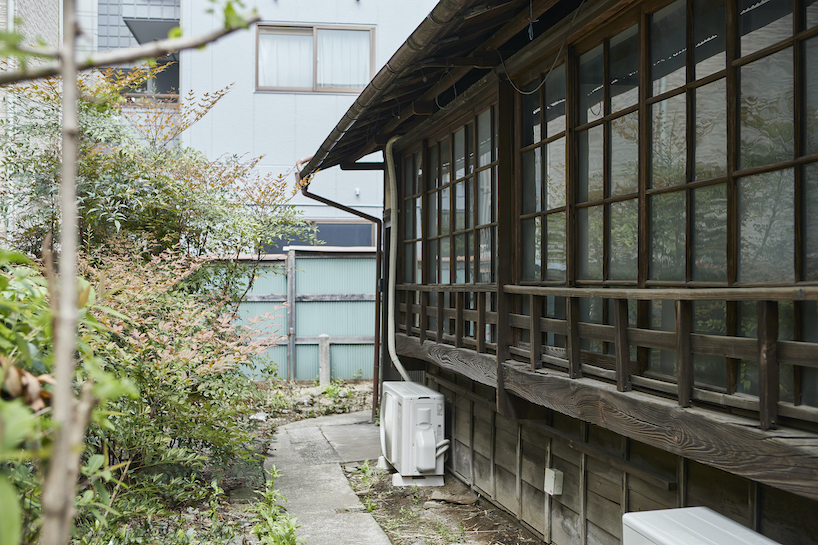
the exterior seems frozen in time
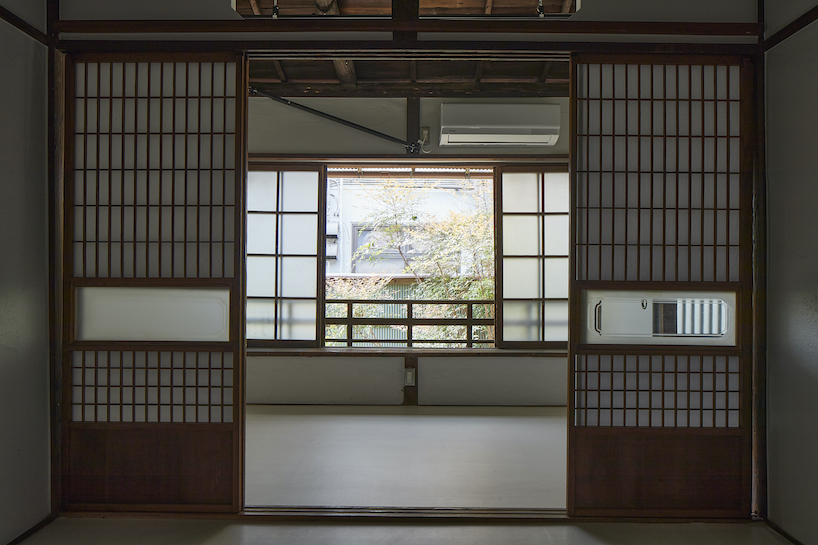
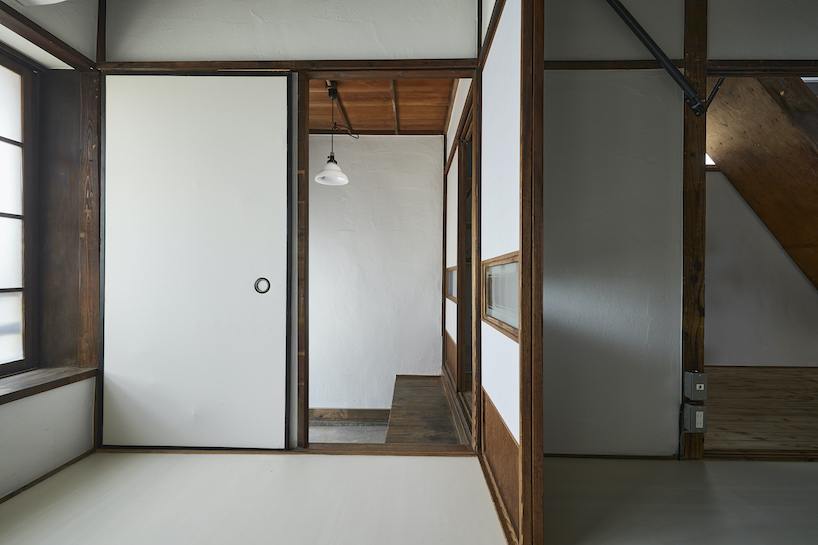
view of one of the two entrances seen from the inside
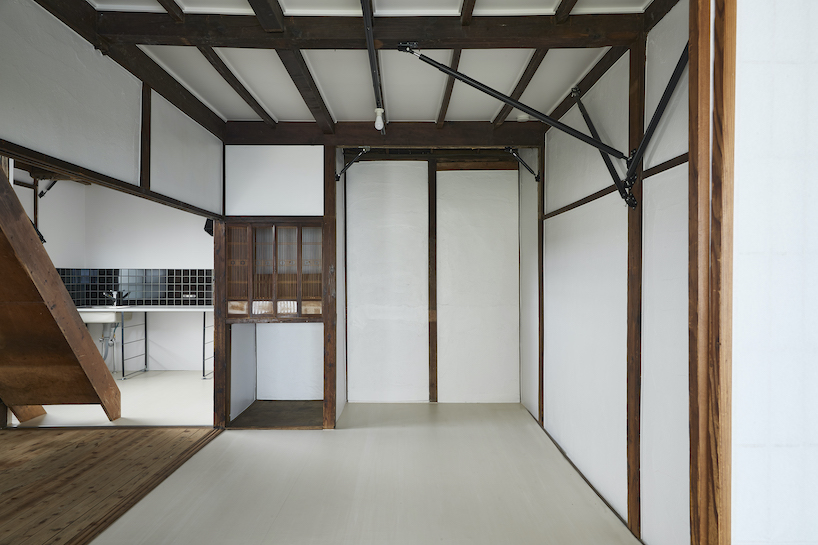
the black dampers are meant to bond all the structural elements together
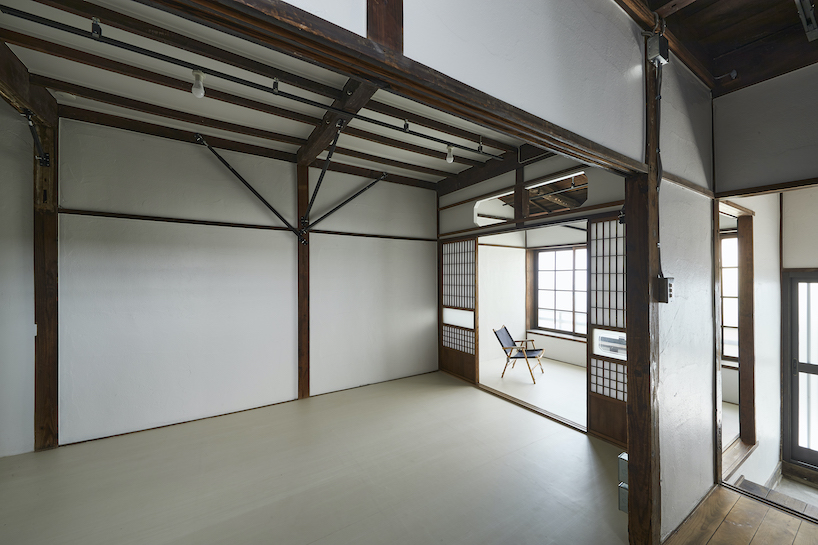
the big openings and the white walls provide plenty of light inside
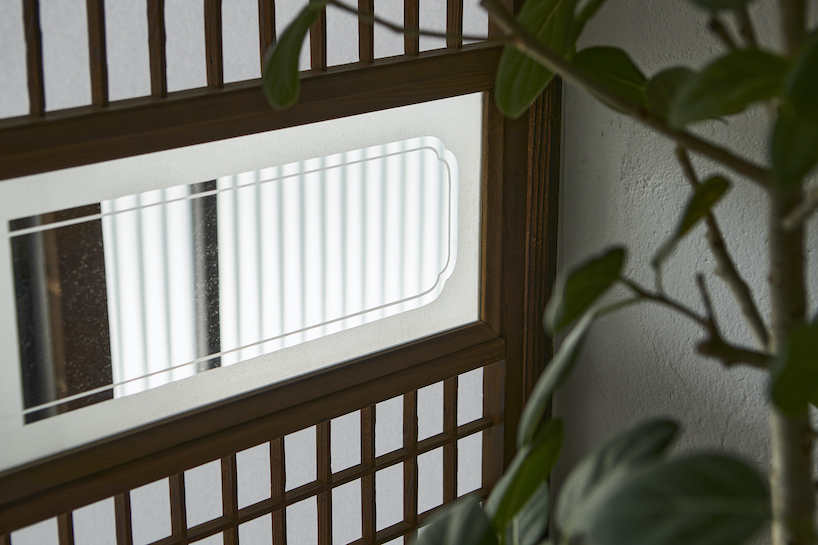
the internal division are still the original ones
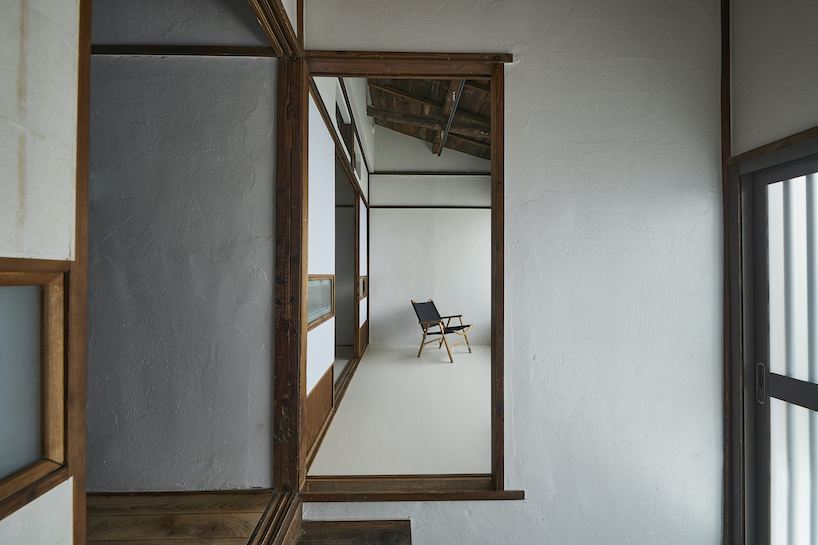
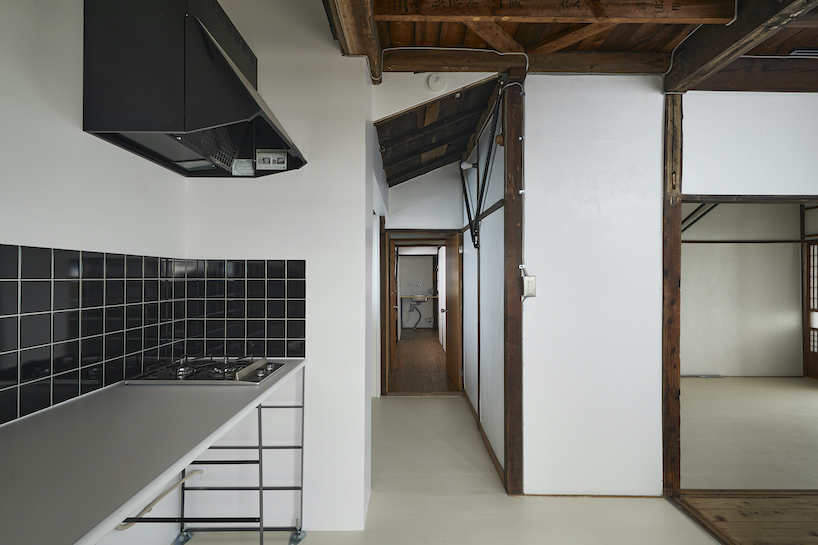
the new kitchen benefits from the removal of the staircase for a more generous space
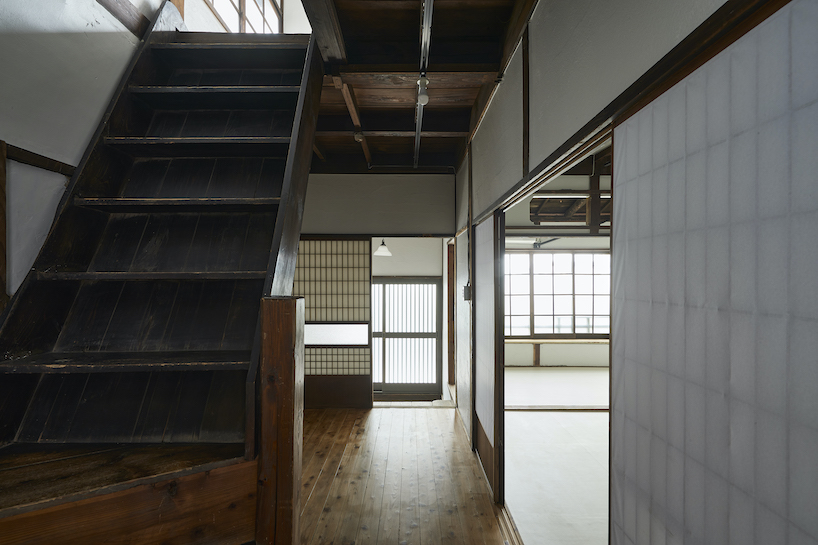
the steep original staircase leads to the newly opened second floor
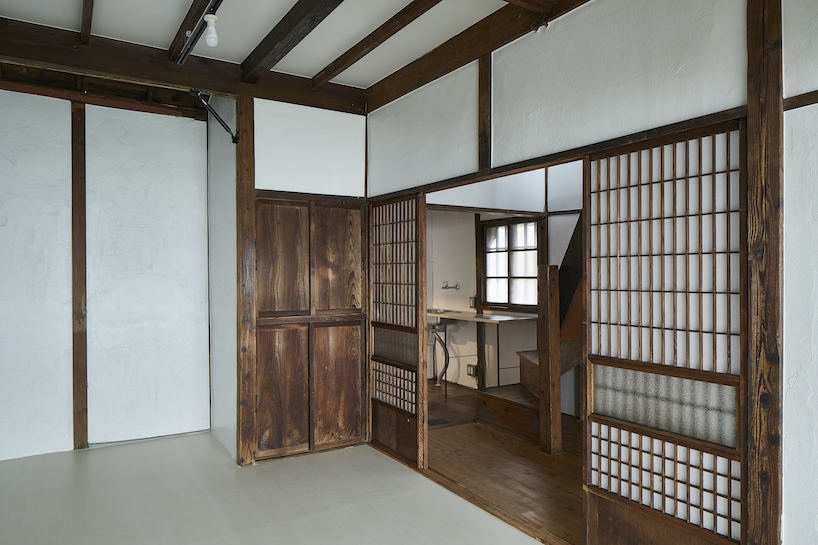
the vintage wooden elements generate a nice contrast with the white walls
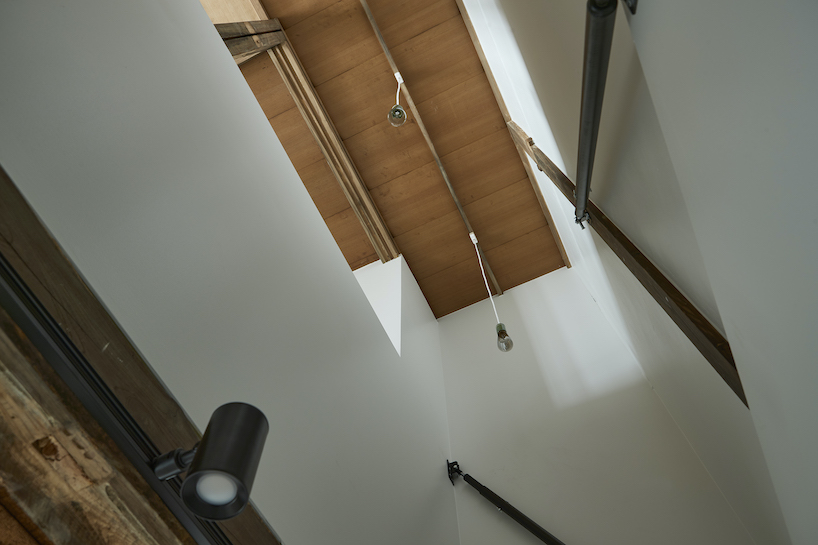
double height connects the kitchen with the second floor bathroom
project info:
name: Hakuraku House
architects: Roovice
designboom has received this project from our ‘DIY submissions’ feature, where we welcome our readers to submit their own work for publication. see more project submissions from our readers here.
edited by: ravail khan | designboom



